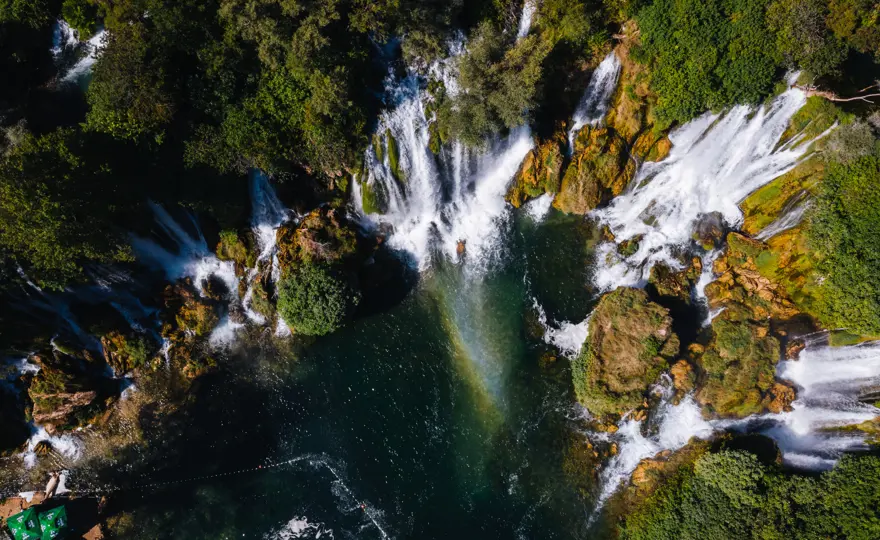
Maja Pravuljac
1st April 2025


Some of the most biologically diverse regions in Europe can be found in the southeast of the continent and around the Black Sea.
From the mountains and forests of Montenegro and Serbia, to the wild rivers of Albania, the Western Balkans contains some of Europe’s most pristine habitats and are home to a host of plants and wildlife found nowhere else in the world. Bosnia Herzegovina’s water system supports 25% of Europe’s fish species alone.
But increasingly, these unique species and habitats are being threatened by the rapid expansion of energy projects across the region. Coal mines and ash dumps contaminate soil and rivers with toxic metals, while coal plants heat up waterways with the water they dispense. Renewable energy projects can also cause significant harm if they are at the wrong scale or poorly located. Hydropower projects can create barriers for fish migration and reduce river quality and flow, and can destroy habitats to make way for roads and reservoirs and can cut local inhabitants off from access to clean water.
We obviously need energy to power our homes, our cities and our businesses. That is why there are laws in place to ensure the environment is protected whilst developing the renewable energy sector.
The problem is that these laws currently are not effective enough. So what can be done so that we can continue to meet energy demand without sacrificing nature?
The answer is simple – strengthen and implement existing laws so that they better protect people and nature.
A key element of energy and environmental policy in south-eastern Europe is the Energy Community Treaty. The Treaty brings together countries from the region with the goal of creating a common energy market between the EU and some of its neighbours.
By signing onto the Treaty, countries from south-eastern Europe and the Black Sea, which are not currently part of the EU, agree to respect the EU’s internal energy market rules by applying them in their national laws to be able to participate in the common European energy market.
This participation comes with the condition that these countries implement and respect certain environmental protection measures and renewable energy targets. For example, the Treaty requires countries to carry out an assessment to determine the impact an energy project will have on the environment before the project can be approved – as is the case within the EU.
However, it has become clear that the diverse and environmentally important habitats and wildlife found in these countries are still under threat from the impacts of energy sector projects because the Treaty does not incorporate all of the EU rules – the Habitats and Birds Directives and the Water Framework Directive - to ensure nature is protected.
This is not only problematic in terms of nature protection but it also creates potentially unfair competition as parties to the Treaty are not regulated by the same energy market rules as their EU neighbours.
Some crucial discussions to include these pieces of EU legislation in the Energy Community Treaty have started between the EU Commission and the signatories of the Treaty. We hope they will be successful. Amending the Treaty is key ensure that damage to wildlife and habitats is properly considered before projects are given the green light
At EU level, there are several key directives that aim to protect species, habitats and water bodies – the Birds Directive, the Habitats Directive and the Water Framework Directive. These directives strive to actively improve the status of species, habitats and water bodies such as rivers and lakes – rather than just stopping their further decline.
Their underlying assumption is that areas designated as protected sites, known as ‘Natura 2000 sites’, and water bodies should not be harmed for the sake of infrastructure projects unless there is truly no other option. They clearly define under which circumstances water quality can be decreased, or when a project can be built which has an impact on a protected area, and specify what needs to be assessed to come to that decision.
This is the standard we need to see in the Energy Community Treaty.
These differences are precisely why, together with CEE Bankwatch Network and WWF Adria, we have carried out an analysis of how the EU directives mentioned above can be incorporated into the Energy Community Treaty. Doing so would not only strengthen nature protection across the region but also help establish a fair and consistent legal framework for all participating countries.
The good news is – it may be easier than it seems. Last year, we analysed the environmental legislation of six Western Balkan countries and found a relatively high level of transposition of EU environmental law. Despite some variation in how countries adopt EU rules, Albania, Bosnia and Herzegovina, Kosovo, Montenegro, North Macedonia, and Serbia have already made progress in aligning with EU standards. .
Our findings suggest that incorporating these directives into the Treaty would not place an undue burden on member countries – especially given that many have already started implementing key elements, such as the Water Framework Directive.
Clearly, this one step alone is not the panacea for protecting nature against all future energy projects – but implementing the directives can already help to minimise the damage to our environment.
As the Energy Community countries start to phase out fossil fuels and invest in renewable energy, better nature protection is key to ensure we tackle climate change while still protecting and preserving nature and wildlife.